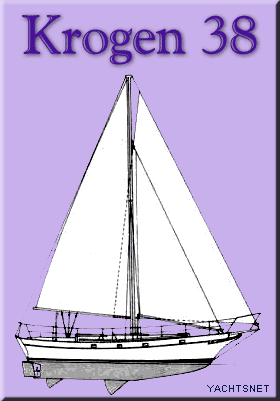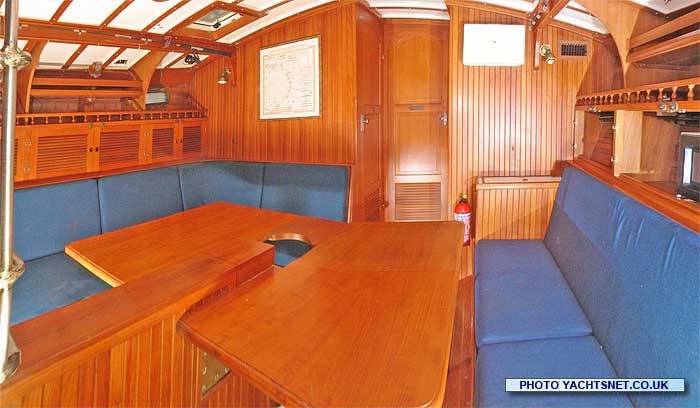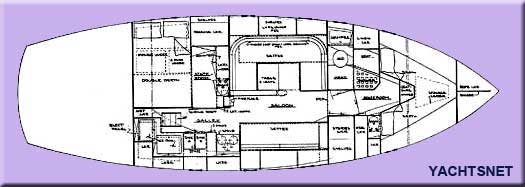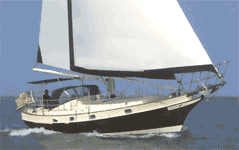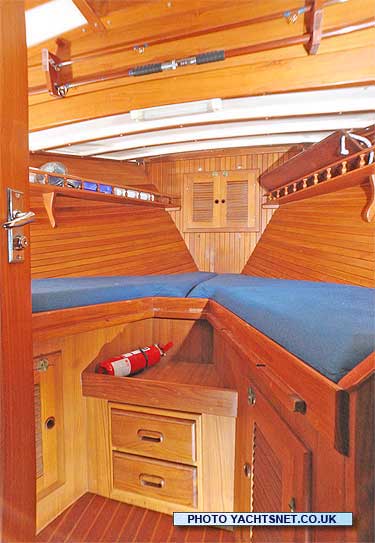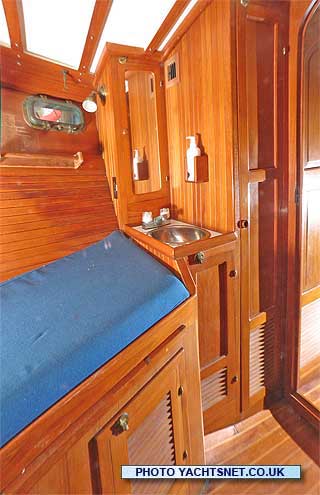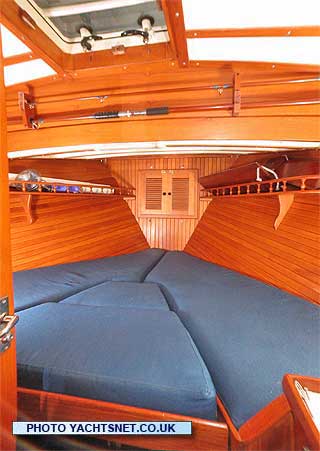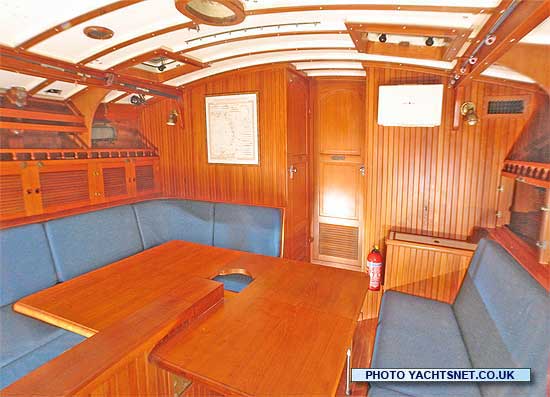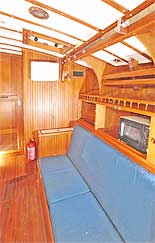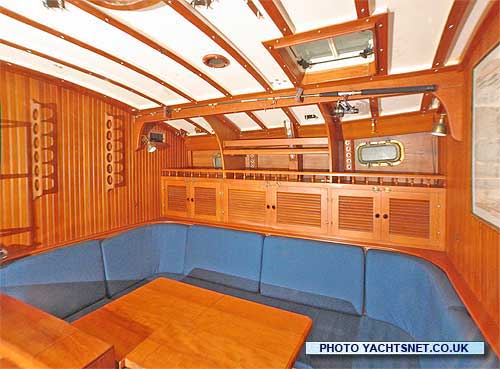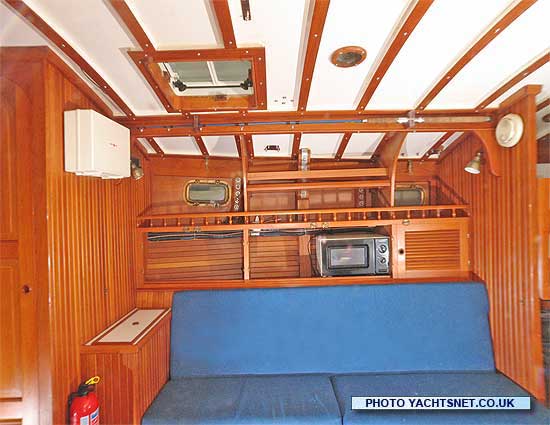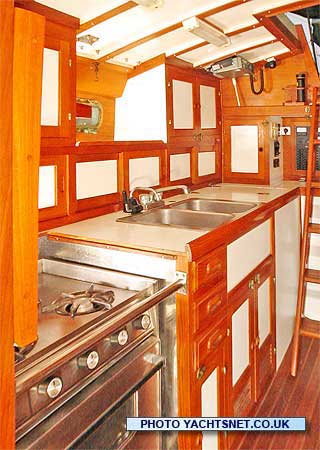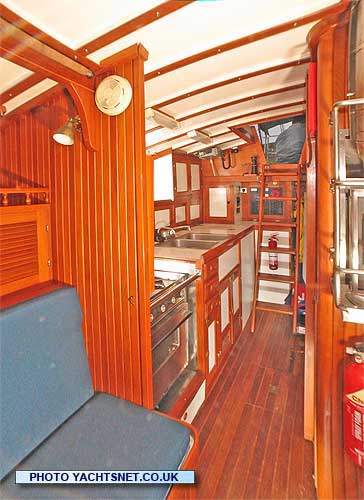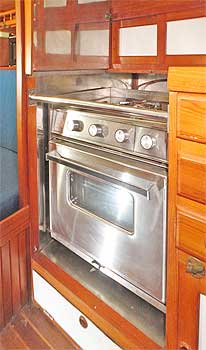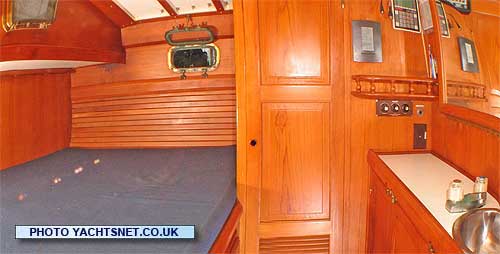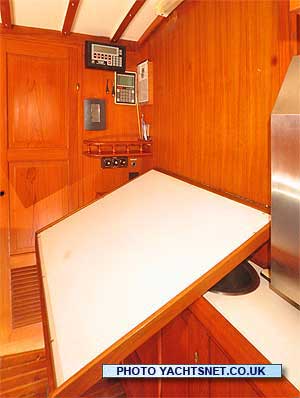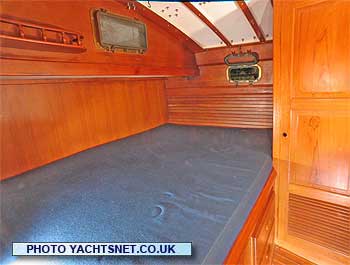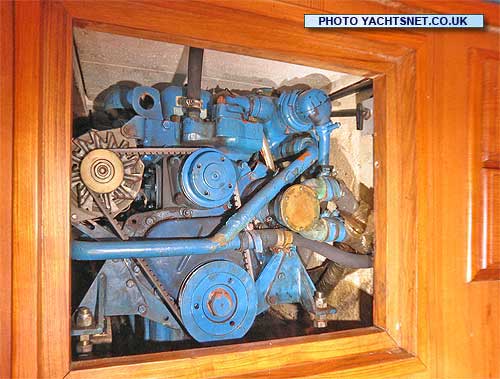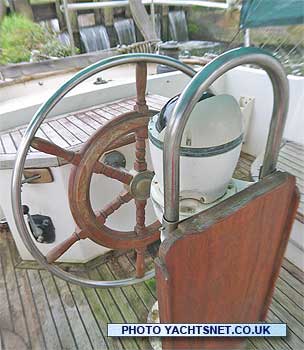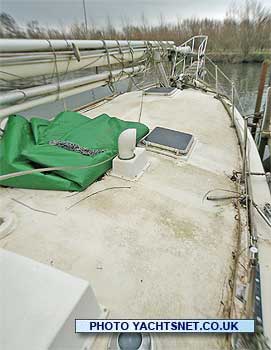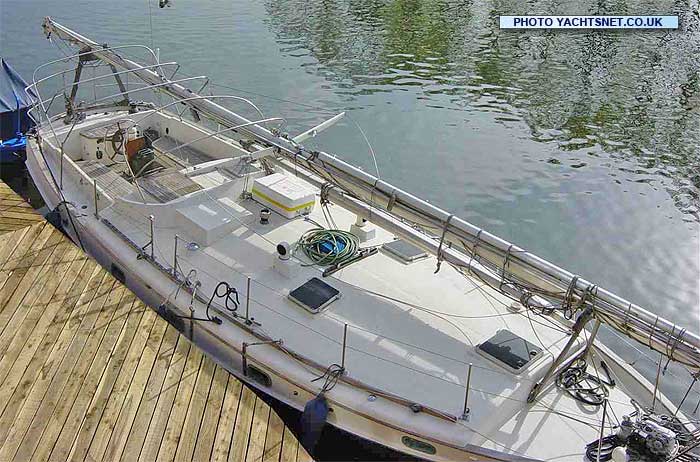|
In 1976 naval architect Jim Krogen
and his business partner Art Kadey founded Kadey-Krogen Yachts,
to build traditional-styled heavy-displacement trawler yachts for
the US market. With the hulls built and finished in Taiwan, these
rapidly became well-known in the USA, with a reputation for quality
build and fit out. Whilst these trawler yachts remain the company's
main focus, in 1984 they also started production of the Krogen 38,
a shallow draught 'gunkholer' for the American East Coast. The first
boat was built for the designer himself, an avid sailor, although
specialising in the design of motor yachts! The twin centreboards
allow good hull balance to be achieved on all points of sail, and
although conceived and laid out internally primarily as a coastal
cruiser, the ability to go offshore was also part of the design.
The hull of the Krogen 38 is GRP sandwich construction
with closed-cell PVC foam core, and a heavy hand lay-up using mat
and woven rovings. The ballast is 7,000 lbs of lead, and whilst
the main deck is GRP with moulded non-slip, the bowsprit and cap
rail are teak and the cockpit is finished with laid teak and teak
gratings. The interior joinery and and paneling is also in teak.
Although marketed by Kadey-Krogen in the USA, the boats were built
in Taiwan.
|
There are big double berths in forecabin and aft
cabin, and the port side of the saloon seating also converts to
a large double. Click the plan or click
here for a larger scale plan, including deck layout
Photo below from
Kadey-Krogen's
website
|
|
|
With a 6' 8" draught with her boards down, and a 30% ballast
ratio, the Krogen 38 is clearly designed to sail as well as look
pretty
|
|
|
|
The forecabin has a vee-berth, convertible
to a double, with vanity unit with sink, and good wardrobe and locker
space. The quality of the joinery and finish is excellent. Between
forecabin and saloon is the large heads compartment, with separate
shower stall, and more hanging locker space opposite (no photo of
the heads - sorry!) |
Below: The saloon table extends to give a massive
dining area - in this photo the keel-stepped mast is absent - this
when stepped goes through the centre of the table. The forward centreboard
trunk is incorporated into the aft end of the table structure. |
|
|
Normally the starboard side of the table is folded
away against the centreboard case, leaving a clear passageway through
the cabin, and still a big enough table area and seating for six
(photos above and below) |
|
|
Yachts
seen here are no longer for sale - the data is online as a
free information service for buyers researching boat types.
THE PHOTOGRAPHS ARE COVERED BY COPYRIGHT, AND MAY NOT BE REPRODUCED
WITHOUT THE PERMISSION OF YACHTSNET LTD.
Go to our brokerage
section for boats currently for sale |
|
Above and right: the linear galley occupies the passageway between
companionway and saloon, with lots of workspace, big twin sinks,
fridge/freezer and a three-burner and oven cooker.
Opposite this is the sliding door to the large aft cabin, with
a very large (7' 3" by 4' 7") athwartships double berth,
under which the main engine is mounted. This aft cabin also has
a vanity unit and a large wardrobe, plus a fold-down chart table
and the navigation instruments
|
|
|
|
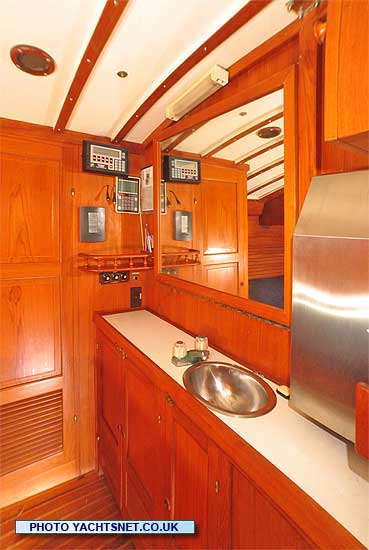
|
The large mirror in the photo at right above
folds down to make an equally big sloping chart table, with the
berth forming a seat. Whilst very unusual, this is a clever idea
in a yacht conceived primarily as a comfortable coastal cruiser,
and in any case the athwartships double is unlikely to be used at
sea |
|
The Perkins 4108 diesel is installed under the double berth,
with normal access via an opening side panel. To give full access
the insulated bunk base sections can be removed
|
The photos below are of a yacht that had been laid
up afloat for quite some time, and was hence in externally rather
dirty
|
|
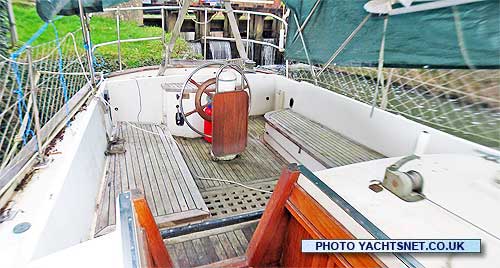 |
The hull has a very pronounced tumblehome just below deck level,
with the stanchions and guardwires mounted well inboard
|
Kadey-Krogen
are still in business, although the Krogen 38 - their only sailing
design - stopped production in 1991 after 85 had been built. |
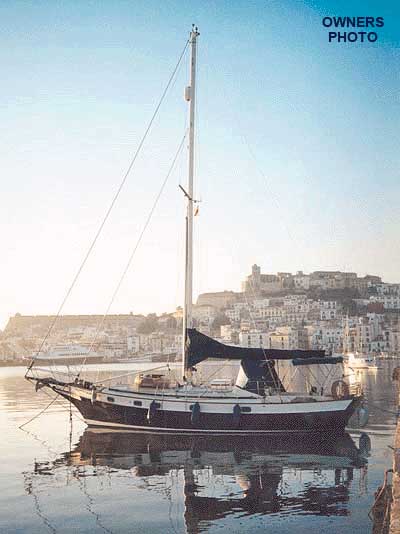
|
|
